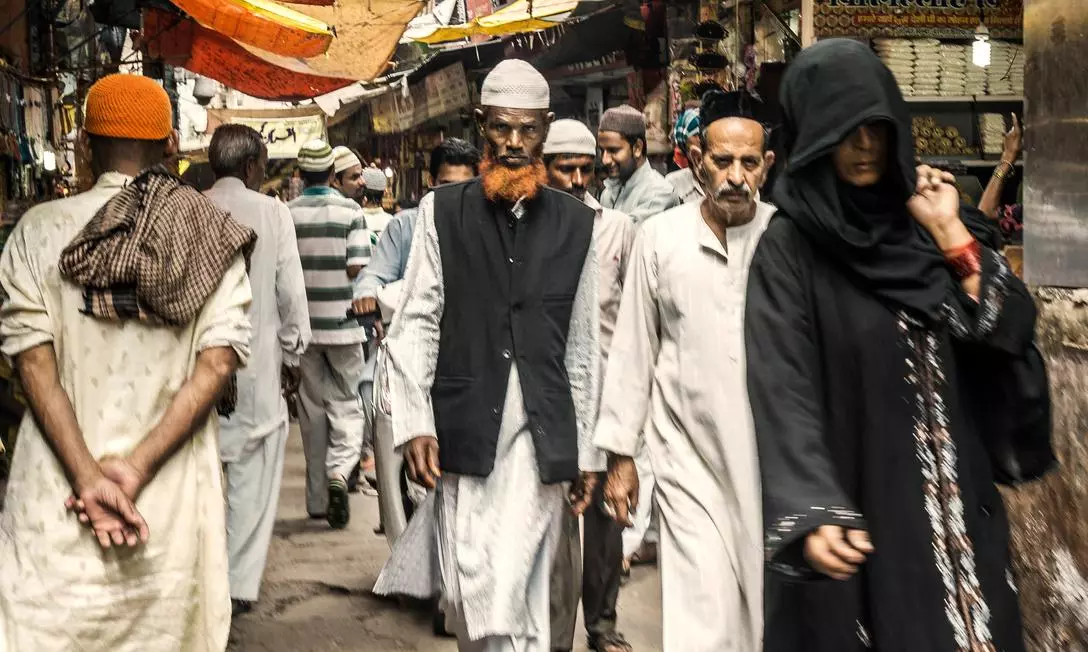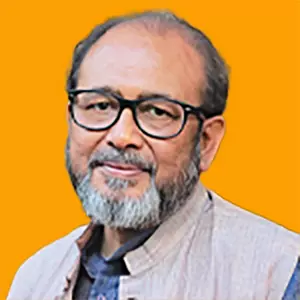
- Home
- India
- World
- Premium
- THE FEDERAL SPECIAL
- Analysis
- States
- Perspective
- Videos
- Sports
- Education
- Entertainment
- Elections
- Features
- Health
- Business
- Series
- In memoriam: Sheikh Mujibur Rahman
- Bishnoi's Men
- NEET TANGLE
- Economy Series
- Earth Day
- Kashmir’s Frozen Turbulence
- India@75
- The legend of Ramjanmabhoomi
- Liberalisation@30
- How to tame a dragon
- Celebrating biodiversity
- Farm Matters
- 50 days of solitude
- Bringing Migrants Home
- Budget 2020
- Jharkhand Votes
- The Federal Investigates
- The Federal Impact
- Vanishing Sand
- Gandhi @ 150
- Andhra Today
- Field report
- Operation Gulmarg
- Pandemic @1 Mn in India
- The Federal Year-End
- The Zero Year
- Science
- Brand studio
- Newsletter
- Elections 2024
- Events
- Home
- IndiaIndia
- World
- Analysis
- StatesStates
- PerspectivePerspective
- VideosVideos
- Sports
- Education
- Entertainment
- ElectionsElections
- Features
- Health
- BusinessBusiness
- Premium
- Loading...
Premium - Events

Instead of trying to deliver on the litany of promises made by the BJP, several legislators and a minister have prioritised the campaign for renaming localities
In a fresh and concerted bid mounted by Hindutva forces to whip up Islamophobia across large parts of North and West India, the project to rename places and sites forms an important component.
This campaign essentially attempts to divert attention from pressing day-to-day crises that dog the hoi polloi and provides an alternative issue and target to be incensed about.
While events like forcing Muslims to stay indoors, as during the recent Hindu festival of Holi, till well into the afternoon, and thereby delay heading to mosques in their localities to offer the mandated congregational namaz every Friday, and the fracas being witnessed over the objective of uprooting the grave of Mughal emperor Aurangzeb, have taken several towns and cities to the brink of riots, “operation re-naming” has been simmering for long.
Renaming in Delhi
In Delhi too, the city-state where the Bharatiya Janata Party (BJP) has staged a political comeback after 27 years, it would require little but common sense to deduce that the party should first try delivering the litany of promises it has made. Instead, several legislators and even a minister have prioritised the campaign for renaming several localities.
The Delhi government’s Public Works Department (PWD) Minister and BJP leader Parvesh Sahib Singh, also ex-officio council member of the New Delhi Municipal Corporation (NDMC), recently declared that he would soon moot the idea of renaming the Talkatora Stadium as Bhagwan Maharshi Valmiki Stadium.
The stadium complex, which also houses a swimming pool, was built in 1974 and derives its name from the Mughal-era garden adjoining it. The word “Talkatora” is said to have originated from two Persian words: “tal”, meaning a tank, and “katora”, meaning a bowl-shaped natural depression.
Also read: From Ladki Bahin to Aurangzeb: The true cost of BJP's poll promises
Assuaging Dalits
According to historians, the water-management system is dated to the reign of Firoz Shah Tughlaq due to his initiatives on water infrastructure by ensuring the collection of water from several streams in this region.
The garden has been the theatre of Delhi’s tumultuous past: In 1737-38, it was a battlefield where the Marathas clashed with the Mughal army when they mounted a raid on Delhi.
Renaming Talkatora Stadium after the legendary poet, also celebrated as the traditional author of the epic Ramayana, is aimed at assuaging the sizeable Dalit community, dwelling in Valmiki Colony, part of New Delhi Assembly constituency.
Wiping off Islamic past
On a larger scale, it is also a move to change the nomenclature of large parts of India and strip the nation of its Islamic past. It is part of the push to depict the entire mediaeval era as a contestation between “us” and “them” although the two of them collectively are little but “we”, and this was consensual ethos till a few decades ago.
Days before Verma’s move, two BJP MPs petitioned local authorities to change the name of Tughlaq Lane, located in the heart of New Delhi’s bungalow zone. One of them, Dinesh Sharma, a former Uttar Pradesh deputy chief minister and currently Rajya Sabha member, and a resident of this street, even changed the address plate outside his house to Swami Vivekanada Marg. He also conducted a “Griha Pravesh” at the new residence on the renamed lane and put out a post, replete with photos in front of a new signboard with the new road name, on X.
Also read: Discussion: What is brewing in Nagpur over Aurangzeb tomb row?
BJP's problem with ‘Najafgarh’, ‘Mustafabad’
Three other newly elected BJP legislators in Delhi are demanding renaming of important localities in the city — Neelam Pehalwan, representing Najafgarh, raised the issue of renaming the area to “Nahargarh” in the Delhi Assembly.
Even prior to his election as MLA from Mustafabad, Mohan Singh Bisht pledged to rename the colony as Shiv Vihar or Shiv Puri. Not to be outdone, the BJP MLA from RK Puram, Anil Sharma, has demanded renaming of a village in his Assembly constituency from “Mohammadpur” to “Madhavpuram”. He said the villagers, predominantly Jats, would welcome the change.
Importantly, Najafgarh got its name from Mirza Najaf Khan, the commander in chief of the Mughal army under Shah Alam II. Mustafabad was named after the Hazrat Mustafa Baba and Mohammadpur, after Mohammad Khan, a landlord during the Lodi era.
Majoritarian argument
The three legislators cited local reasons for making the demand to “Hinduise” the colony/locality/village names. Pahalwan contends that people suffered a lot when Mughal emperor Shah Alam II took control of Najafgarh. Later, during the 1857 revolt, Raja Nahar Singh (thus the proposed name — Nahargarh) fought and brought the area into the Delhi province.
Bisht has stated that people in the area are troubled by the prefix “Mustafa” in its name and asked why can’t an area predominantly inhabited by Hindus be named Shiv Puri or Shiv Vihar. Could there be a more blatant majoritarian argument?
Also read: Mosques covered with tarpaulin for Holi celebrations in Shahjahanpur
A poet’s lament
When such arguments rent the air, one cannot but get reminded of the tragic lines of Pakistani poet, Fahmida Riaz:
Tum bilkul hum jaise nikle
Ab tak kahan chhupe the bhai
Who murkhata who ghaamad-pan
Jisme humne sadi ganwai
Aakhir pahunchi dwar tumhare
Arey badhai bahut badhai
(You turned out to be just like us; Where were you hiding all this while, dear; That foolishness and that arrogance; On which we wasted precious centuries; It has ultimately reached your doorstep too; Congratulations dear, many congratulations)
Only successes, no failures
Similarly, Sharma said the proposal to rename the colony in his constituency as Madhavpuram was passed by Municipal Corporation of Delhi earlier. It however, remained pending in the Assembly during the AAP’s tenure. These demands have been raised because these can be easily met now and it would also convey a false sense of accomplishment.
This is similar to what Prime Minister Narendra Modi does: He repeatedly mentions the “success” in distributing free food to millions of Indians and in this manner glosses over his “failure” to provide jobs which would enable people to lead respectful lives and not be dependent on dole.
Also read: UP: Imam advises Muslims to offer namaz at nearby mosques on Holi day
After British era
Changing names of cities, towns, villages, colonies and even educational institutions are not new in India. After the British left India, the new government changed many city names that had been altered for the benefit of the British nobility to make name pronunciation easier for them — Cawnpore, for instance, reverted to Kanpur while Jabalpore once again became Jabalpur.
Independent India’s government and city councils of the time also changed street names from those named after the British to that of Indian lineage — either names of nationalist leaders or iconic personalities in history were assigned to these places that required new names.
Over the past several decades, further name changes were done to return to the old pronunciation to remove the Anglicised names — Calcutta became Kolkata, Poona became Pune, Bombay to Mumbai, Madras to Chennai (after the village of Chennapattanam) and so on.
The post-2014 era
The BJP-led government embarked on a string of renaming cities and towns after assuming office in 2014. Mughalsarai became Deendayal Upadhyaya Nagar, overlooking the fact that if there was a problem with any town having a name with “Mughal” as prefix, probably it would have been more prudent to rename Mughalsarai as Shastri Nagar, for the town was not only the birthplace of India’s second prime minister, but he also studied there in his initial years.
As part of its politics of appropriation, the BJP has now initiated the move to induct Lal Bahadur Shastri into the Hindutva hall of fame. But it will have a troubled time while explaining why they renamed Mughal Sarai after Upadhyaya and not Shastri.
In the past decade, the new-old pairings are numerous — Faizabad-Ayodhya, Gurgaon-Gurugram, Allahabad-Prayagraj, Feroz Shah Kotla Stadium-Arun Jaitley Stadium, Mewat-Nuh, Aurangabad-Chhatrapati Sambhaji Nagar, Aurangzab Road-APJ Abdul Kalam Road, Rajpath-Kartavya Path, Mughal Garden (Rashtrapati Bhawan)-Amrit Udyan and so on.
Also read: ‘Exactly why India attracts so few tourists’: Dalrymple on Mughal site’s demolition
Flawed view of history
Giving new names to these cities or streets is a part of the efforts to exorcise the mediaeval era from Indian history. Modi has repeatedly — since 2012 at least — referred to this period as an epoch of slavery; he made this claim even at the US Congress during his visit in the middle of 2023.
This is a fundamentally skewed way of looking at history. It is actually incorrect to refer to the entire medieval period as an era of slavery and projecting the imagination of all Muslim rulers and emperors as “colonialists” on a par with the British.
There is a vital difference between the British and the later Muslim rulers because the latter did not take away the wealth of the land to their countries of origin. Instead, most of the rulers of the medieval era integrated within Indian society.
Punishing Muslims
All that is happening, from pushing Muslims into their homes and not permitting them to hold community prayers on Fridays, to controlling their culinary practices by putting curbs on marketplaces for particular items on specific days, to changing place names, are effectively the beginning of the process of ghettoisation in India.
In Ahmedabad, the locality of Juhapura is infamous as Asia’s biggest ghetto where lakhs of Muslims, from the poorest to the richest, live cheek by jowl. They head out in the morning for work and return to their homes, their locality, beyond the “border” which only a few Hindus ever cross. Inside this ghetto, the state’s services are mostly conspicuous in their absence.
If the multi-layered campaigns that have been launched by Hindutva forces succeed in reaching their goals, India may soon have hundreds of thousands of “Juhapuras” mushrooming across large swathes of the country, especially in the northern and western parts, and to some extent in the eastern part of India.
(The Federal seeks to present views and opinions from all sides of the spectrum. The information, ideas or opinions in the articles are of the author and do not necessarily reflect the views of The Federal)


